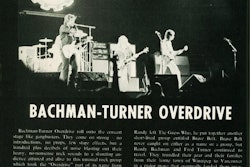Spring Time
Avoid expensive repairs through regular suspension maintenance
Spring suspensions are used on most front axles and are popular on the tandems of on/off-road vehicles because they are less easily damaged. Regular inspection and greasing of this system will head off expensive repairs, help reduce tire wear and improve handling.
1. Look at the shock absorber mounts and the bushings inside. Torque shock mounting bolts to specification. Replace the bushings, or have them replaced, if cracked or loose.
2. Feel the shock absorbers after the truck has been driven two miles or more. Replace any not warm to the touch. Replace every 100,000 miles to guarantee good performance. Shocks in good working order will preserve springs, bushings and other parts, along with ride.
3. Inspect the areas around the spring U-bolts for a fine layer of rust due to chipped paint. Tap on them with a hammer. A solid sound means they are tight, while a rattle or ringing noise means looseness. If loose, look up factory specifications and torque with a torque wrench. If the bolts fail to torque properly, have them replaced and properly torqued. If very loose, the centering pin for the spring may be worn or its locating hole enlarged. Have the alignment reset. Torquing these every 100,000 miles will minimize the need for repairs.
4. Check the springpins at the ends of springs by listening for a snapping noise or seeing looseness at the end of the spring as a helper rapidly turns the steering wheel back and forth. You’ll see the motion inside the rubber bushing that fits inside the spring. You can also check by looking for up-and-down play inside the bushings when the truck is raised on a floor jack. Replace worn springpins. Regular greasing with the truck sitting normally or off the wheels, depending on manufacturer recommendation, will prevent wear.
5. Check the springpin rubber bushings for wear. Bushings not tight in the ends of the springs, or springs off center in their hangers, are signs of wear here, and the sides of the springs, and the insides of their eyes, can wear, too. You can also check for play here by having someone turn the steering wheel back and forth as you watch the front suspension. Replace worn bushings or springs before wear causes further damage.
6. Inspect all multiple spring arrangements for broken or cracked leaves and replace broken/cracked parts.
7. On tandem suspensions such as the Mack Camelback, inspect the trunnion bearing, which allows the tandems to rock. This requires removing the cover and reinstalling with a new gasket. This should be attempted only by someone with mechanical experience. On Mack trucks, grease the two grease points every 4,000 miles in off-road service, 15,000 on-road. Check the interval on other brands.
8. Also on tandem suspensions, inspect the spring isolators or “elephant pads” to make sure they are not cracked or crushed. Have them replaced if deteriorated.
Suspension Maintenance
Level of difficulty (scale 1-5 with 5 being the hardest job): 2
Time needed: 90 minutes
Tools needed:
1. A floor jack of sufficient rating.
2. A torque wrench of appropriate rating.
3. A helper to operate the steering system while you observe the suspension.
4. Factory literature listing torque specifications, greasing intervals, etc.
Product Tip
Technician Brad Galla recommended using gas-filled shocks rather than conventional designs. The fluid in normal shocks can get air in it during hard running, which causes performance to deteriorate. The nitrogen used in gas shocks won’t dissolve in the fluid and cause it to thin out, ensuring much more consistent performance.
Big Rig Basics Tip
“A critical maintenance item is the center bushing made of vulcanized rubber. You can tell when it’s starting to fail as the dog-bone-shaped center rocker will start to move out so the weight is no longer on center but is cantilevered. Replace the entire unit if the bushing fails. It makes a better repair because the wear can make the hole egg-shaped. The entire assembly just bolts in place — much easier than pressing in a new bushing. Inspect and, if worn or damaged, replace the pins that are located under the springs and keep everything in place during rebound.”
— Bob Maddox, Nick and Dee’s Trucking,
Hereford, Texas









